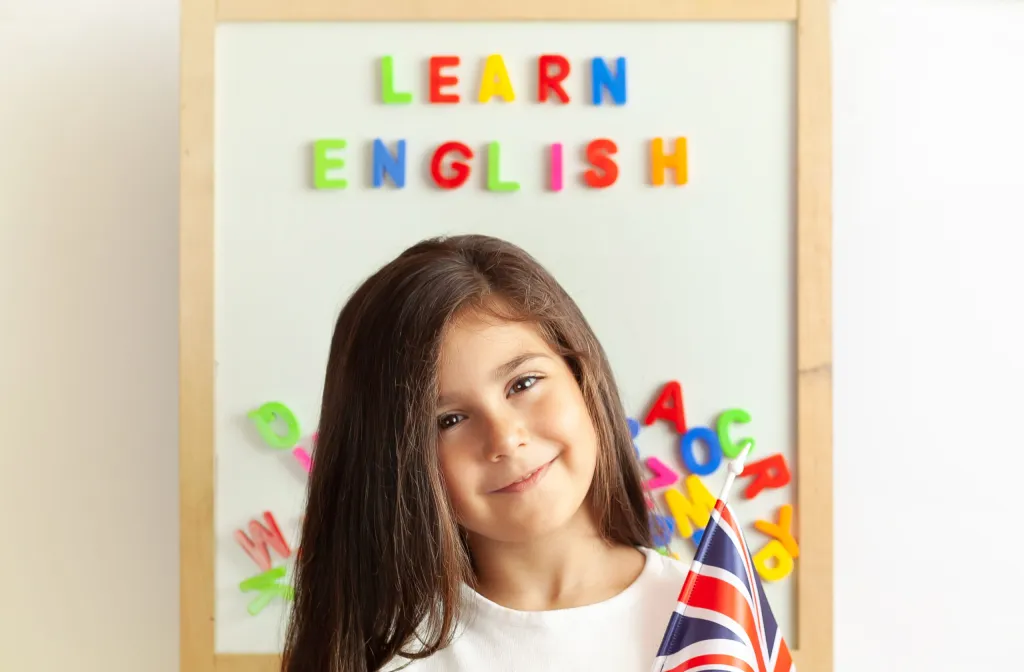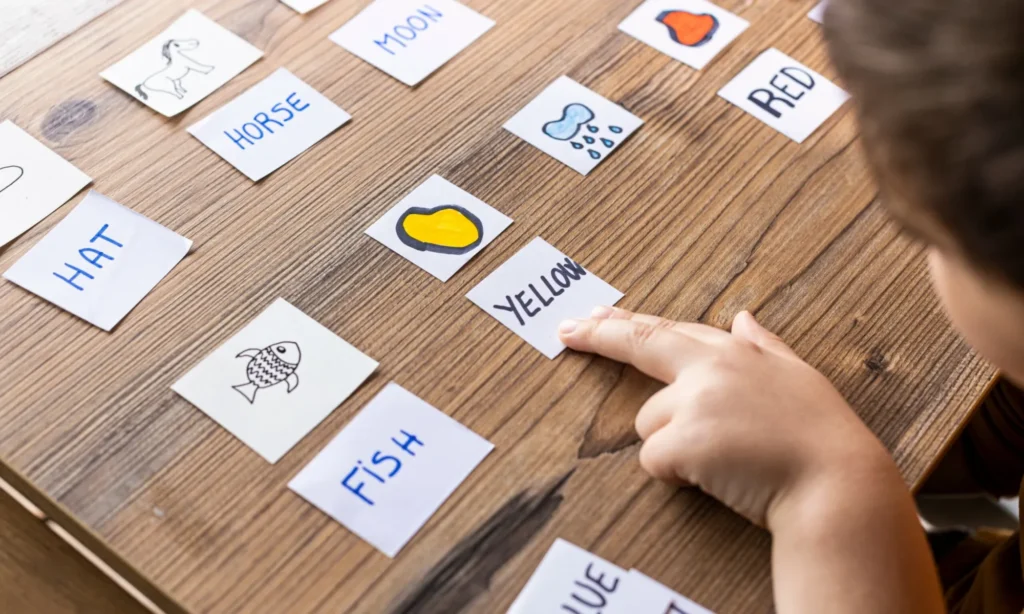- Fingerpainting
- Rainbow
- Caterpillar
- Sorting
In childhood the world seems especially colourful with a variety of different shades. In language learning the topic of colours is usually one of the first to study because it helps us to know more about the world around us.
For children who just start learning English it is enough to learn basic colours first, they are:
- Red;
- Orange;
- Yellow;
- Green;
- Blue;
- Brown;
- Purple;
- Pink;
- White;
- Black.
But don’t overwhelm your toddler with too many colours at once. Focus on about two at a time and then add more as he becomes familiar with those. Whenever you see those two colours, point them out to your child. It’s better to use colours that are not similar to each other so you don’t confuse your toddler. For example, don’t learn blue and purple or red and orange together. It’s better to take contrasting colours: red and green, blue and yellow, black and white.
Here are five games that will make the learning process fun and exciting for your toddler.
Colourful cards
This is the simplest and yet the most effective way to learn colours. You need to make cards out of cardboard, colour them and sign. So your child will not only remember colours, but also their names’ spelling.
With such cards it is convenient to study both at home and on a walk. Show your child one of the colours, ask him to tell its name in English and then find an object of the same colour around you.
Fingerpainting
Sensory experiences where children are actively touching things are one of the best ways to learn something new. Ask your kid to rub his hands and fingers in the paint and just smudge it onto paper. Talk about the colours he is using and ask him what colour is on his hands and on the paper. You can take 3 primary colours (blue, red, yellow) and mix them until you get secondary colours (green, purple, orange).
Rainbow
The rainbow is a great visual material for learning colours. Toddlers can simply draw it saying each colour in English, mold it from plasticine or create a picture from coloured paper. This will help them to learn colours and to improve their fine motor skills as well!
And here is a rainbow song that you can sing with your kid to learn colours:
Red and yellow and pink and green
Purple and orange and blue
I can sing a rainbow
Sing a rainbow
Sing a rainbow too
Listen with your eyes
Listen with your ears
And sing everything you see
I can sing a rainbow
Sing a rainbow
Sing along with me
Red and yellow and pink and green
Purple and orange and blue
I can sing a rainbow
Sing a rainbow
Sing a rainbow too

Caterpillar
Invite your child to cut out circles of coloured paper and glue them on a sheet of paper so that you get a colourful caterpillar. Then let the child step with his fingers from one circle to another naming the colours in English. This sensory activity will also help to improve fine motor skills using the small muscles of the hands and fingers.
Sorting
Children love sorting and this is also very important for their fine motor and learning activity. So take some things of the colours you learn. For example, toddlers love little pom-poms because of their softness, so they’ll be excited to learn with them. Place one of each colours out to start. Ask the child to sort the pompoms into their coordinating colour pile as he says the name of each colour. Be careful if your toddler still tends to put things in his mouth.
Watching cartoons and videos in English also helps a lot. Novakid teacher Cassie has prepared a video about colours for children, sing this funny song with her:
Playing games is one of the best ways to encourage our children to learn every day. Your toddler is constantly listening and absorbing everything around him. And always remember that the key to your child learning is your support!







































